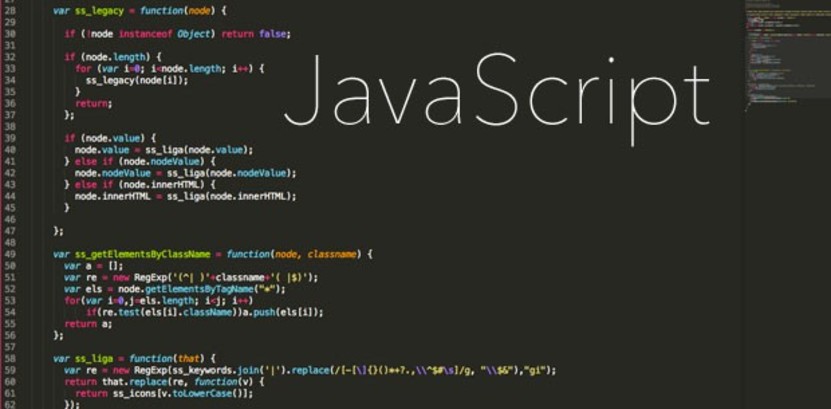When it comes to modern web development, JavaScript is everywhere. From interactive websites to dynamic web applications, JavaScript is the engine that makes the web feel alive. Whether you are a beginner just starting to learn web development or an experienced programmer looking to enhance your skills, understanding JavaScript is essential.
What is JavaScript?
JavaScript is a versatile programming language that runs in the browser and on the server through environments like Node.js. Unlike HTML and CSS, which are responsible for structure and style, JavaScript adds behavior to web pages. It allows developers to manipulate elements, respond to user interactions, and fetch data dynamically.
At its core, JavaScript enables interactive experiences. Buttons can trigger actions, forms can validate input in real time, and content can update without refreshing the page. This level of interactivity is what makes modern websites engaging and user-friendly.
Read More: Understanding the Power of a Web Framework
Core Concepts of JavaScript
Variables and Data Types
In JavaScript, variables store data that can be used and manipulated throughout your code. Using let, const, and var, developers can declare variables to hold numbers, strings, objects, or arrays.
Understanding data types is essential for handling values correctly. Arrays and objects allow storing multiple values, which is crucial for building complex applications with JavaScript.
Functions
Functions in JavaScript are blocks of reusable code that perform specific tasks. They can take input, execute code, and return output. Functions make your code modular and easier to maintain.
Functions can be declared traditionally, as expressions, or as arrow functions. This flexibility allows developers to write clean and concise JavaScript code.
Conditionals and Loops
Conditionals like if, else, and switch let your JavaScript code make decisions based on certain criteria. Loops such as for, while, and forEach allow repetitive tasks to be automated efficiently.
Mastering conditionals and loops is essential for controlling program flow and handling dynamic content with JavaScript.
Read More: Understanding GPS: Navigating the World with Ease
Working with the DOM
One of the most powerful features of JavaScript is its ability to interact with the Document Object Model (DOM). The DOM represents the structure of an HTML page as a tree of nodes that can be accessed and modified through JavaScript.
Selecting Elements
Using methods like getElementById, querySelector, and querySelectorAll, developers can select HTML elements to manipulate.
Modifying Elements
Once selected, elements can be modified. JavaScript allows changing text, attributes, styles, and even adding or removing elements dynamically.
Event Handling
Events are the backbone of interactivity in JavaScript. Developers can listen for clicks, input changes, scrolling, and other user actions to trigger functions.
Event handling makes web pages responsive and engaging, creating a seamless user experience.
Read More: Understanding the World of Internet of Things
Modern JavaScript Features
ES6 and Beyond
Modern JavaScript, often referred to as ES6 or ECMAScript 2015+, introduces powerful features that make coding easier and more efficient. Features like let and const for variable declaration, template literals, arrow functions, destructuring, and spread/rest operators streamline development.
These features allow developers to write cleaner, more readable JavaScript code while improving performance and maintainability.
Promises and Async/Await
Handling asynchronous operations is critical in JavaScript. Promises and async/await simplify working with tasks like fetching data from APIs or reading files without blocking the main thread.
These tools make JavaScript a powerful language for building responsive web applications that interact with servers and external data sources efficiently.
Modules
Modules in JavaScript allow splitting code into reusable files, improving organization and maintainability. Using export and import, developers can structure large projects cleanly.
Modules are essential for modern JavaScript frameworks and large-scale applications.
Read More: Understanding Cloud Computing in Everyday Life
JavaScript in Web Development
Form Validation
One common use of JavaScript is validating forms on the client side. Checking user input before sending it to the server improves user experience and reduces server load.
Dynamic Content
JavaScript allows updating content without reloading the page. This capability is the foundation for single-page applications (SPAs) and interactive web apps.
Animation and Effects
From simple hover effects to complex animations, JavaScript can enhance the visual appeal of a website. Libraries like GSAP or anime.js build on JavaScript to create advanced animations smoothly.
APIs and External Data
JavaScript can interact with external APIs to fetch and display data dynamically. This ability powers everything from weather apps to social media feeds and e-commerce platforms.
Best Practices for Writing JavaScript
-
Keep code modular and organized using functions and modules
-
Avoid global variables to prevent conflicts
-
Comment your code to improve readability
-
Use modern ES6+ features for cleaner syntax
-
Optimize loops and DOM manipulation for performance
-
Test across multiple browsers to ensure compatibility
Following these best practices ensures maintainable and efficient JavaScript code.
Challenges with JavaScript
While JavaScript is powerful, it comes with challenges. Browser differences, asynchronous code, and security concerns like cross-site scripting (XSS) require careful handling. Proper testing, debugging, and secure coding practices are essential for reliable applications.
Frameworks and Libraries
JavaScript has a rich ecosystem of frameworks and libraries that simplify development. React, Angular, and Vue help build complex front-end applications, while Node.js allows server-side programming. Libraries like jQuery, Lodash, and D3.js provide specialized utilities for tasks ranging from DOM manipulation to data visualization.
The Future of JavaScript
JavaScript continues to evolve with new features, better performance, and improved syntax. WebAssembly integration, enhanced APIs, and frameworks like Svelte or Next.js are shaping the future of web development. Learning JavaScript ensures developers remain relevant and capable of building modern, interactive web experiences
